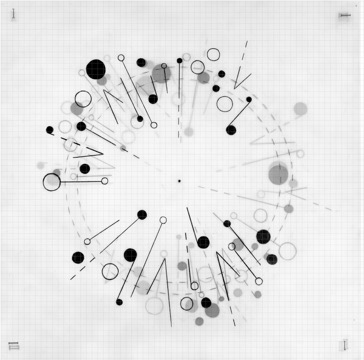(Un)Common Precedents, Agora II Symposium, Keynote Presentation Abstracts
September 22-24, 2023
(Un)Common Precedents is the second event in the series of biennial symposia called Agora, organized by Carleton Research | Practice of Teaching | Collaborative (CRIPTIC).
C R | P T | Collaborative | is formed by PhD Candidates, PhD students, Post-Professional Master students, and faculty of the Azrieli School of Architecture & Urbanism (ASAU) at Carleton University (CU), Ottawa, Canada. The Collaborative, founded in 2019, pursues research in the humanities with a diverse research agenda that reflects the interests of the collaborators through the Practice of Teaching in academic settings in architecture.
Held on September 22-24, 2023, the symposium is co-convened by Dr. Federica Goffi (C R | P T | C Chair) and PhD Candidates Isabel Potworowski and Kristin Washco (C R | P T | Coordinators). The workshops, exhibitions, and performances are organized with the support of Dr. Jesse Stewart SSAC | Dr. Sheryl Boyle ASAU | Dr. Suzy Harris-Brandts ASAU | Ryan Stec Artengine.
Abstracts of the Keynote Presentation can be found below. The complete Book of Abstracts can be found here on the Agora II website.
The event will be livestreamed on the ASAU YouTube channel: http://youtube.com/channel/UCnFiZaGcjV4U2L0ZgpMbFXw/live
KEYNOTE PRESENTATIONS
Writing as a Mode of Investigation
Keynote Speaker: Klaske Havik
This presentation explores how writing can offer ways to address social and experiential aspects of architectural projects. I will highlight three viewpoints in the use of writing as a mode of investigation: as an architectural journalist, as a researcher looking into literary perspectives towards architecture, and as a ‘literary’ architectural writer.
First, I will show through some examples of articles how I have described architectural projects for several architecture reviews. Then, I will share how I have been seeking literary strategies in architecture, discovering poetic, narrative, and imaginative dimensions in architectural precedents. Finally, I will show how I have used literary modes of writing in presenting architectural projects. In this way, the lecture will address how writing as a mode of investigation allows reading architectural projects in terms of their experiential qualities and sensory affordances while helping to imagine how an architectural project can accommodate social activities.
Klaske Havik is a Professor of the “Methods of Analysis and Imagination” chair at the Faculty of Architecture and the Built Environment, TU Delft in Delft, Netherlands. Her book Urban Literacy: Reading and Writing Architecture (2014), based on her PhD research, proposes a literary approach to architecture and urbanism. Since 1999, she has authored or co-authored 58 book chapters and 56 articles on literature and architectural design. She is currently leading the EU COST Research Network Writing Urban Places.

Thinking Gastronomically Across Many Media
Keynote Speaker: Ken Albala
While we sometimes see high-end restaurants create recipes for specific bespoke ceramics, rarely are physical spaces, pottery, and wooden utensils created together as a unified aesthetic experience for daily use. Rather than recreate stereotypical styles from the past, this address considers how all the objects used in an ordinary meal might combine to create a total gastronomic event. Through hands-on objects in clay, wood and food, the author draws on history and reimagines art and architecture through the lens of food.
Dr. Ken Albala is Tully Knoles Endowed Professor of History at the University of the Pacific in Stockton, California. He is the author or editor of 27 books on food including academic monographs, reference works, translations and cookbooks. He was also the editor of several food series including over 100 titles. His 36-episode course Food: A Cultural Culinary History is available from Wondrium and Cooking Across History was released in 2020. His most recent work is The Great Gelatin Revival which will be followed by a cookbook Opulent Nosh. He recently won the 2023 Distinguished Faculty Award from the university.

An Architect’s Address Book: A trip down Pentry Lane
Keynote Speaker: Robert Lemon
An Architect’s Address Book (Oro Editions, 2023) is a memoir in eighteen chapters of the places Robert Lemon (Carleton BArch, 1979) has studied and worked over the past six decades. Each chapter describes a place where he has lived and had a mailing address. The memoir includes his time at Carleton University, Ottawa, living on Pentry Lane, during his studies and work as an architect. Studying architecture and conservation, Robert Lemon has lived and studied in Ottawa, Paris, London, Rome, and York. His work has involved projects in Vancouver, Los Angeles, Dorset, the High Arctic, and Xi’an. Other stories are about visiting the buildings of Andrea Palladio and Carlo Scarpa in the Veneto, Arne Jacobsen and Kay Fisker in Denmark, and five iconic twentieth century houses in France, in the company of colleagues who are featured in the book. For Agora II, Lemon will talk about the chapters that relate to the importance of travel as an essential part of architectural education.
Robert Lemon is an award-winning architect and writer. Born in southern Ontario, he began his architectural studies at Carleton University (BArch 79) in Ottawa. In 1979, Lemon moved to Vancouver, where he has lived and practiced for over four decades. He has a master’s degree in architectural conservation (ICCROM, Rome & University of York, UK). Lemon’s professional career focused on heritage planning, building rehabilitation and custom residential commissions. He was the Senior Heritage Planner for the City of Vancouver (1991-1996). He designed or rehabilitated award-winning custom residences in British Columbia. He presented papers at conferences around the world (Ottawa, Miami, Banff, Bratislava and Stockholm) and published his work in professional journals (APT, DOCOMOMO, ICOMOS). His memoir An Architect’s Address Book – the places that shaped a career was published by ORO Editions in 2023.

Liquid Architecture – Frozen Music: On the Relationships between Music and Architecture
Keynote Speaker: Jesse Stewart
This keynote presentation will examine the implications of Wolfgang Goethe’s (1749-1832) famous dictum, “Music is liquid architecture; Architecture is frozen music” (March 23, 1829).1 How do—or might—the fields of music and architecture illuminate one another? What is gained when we bring insights, approaches, and methodologies associated with architecture to bear on music creation and vice versa? This talk will explore these questions through an examination of several points of intersection between music and architecture, including the work of composer architect Iannis Xenakis (1922-2001) and composer and music theorist James Tenney (1934-2006), as well as the presenters’ interdisciplinary creative practice.
1 Johann Wolfgang von Goethe, Conversations of Goethe with Johann Peter Eckermann, 282, translated by John Oxenford, edited by J.K. Moorhead (New York: Da Capo Press, 1998).
Dr. Jesse Stewart is an Associate Professor of Music at Carleton University School for Studies in Art and Culture (SSAC) in Ottawa, Canada. He is an award-winning composer, percussionist and visual artist. He participated in over 20 exhibitions in public art galleries. He is a founder of “We Are All Musicians,” through which he conducted hundreds of inclusive music workshops. He developed a variety of adaptive and assistive technologies enabling people with disabilities to make music.

(UN)COMMON INTENTIONS: THE ANTI-PRECEDENT
Moderator: Dr. Lisa Moffit
The anti-precedent questions the very notion of precedent in architectural design. It calls for an attentive examination of the (un)common intentions behind the choice of precedents inspiring architecture design. Precedents can be from within or without architecture, often from other disciplines, sometimes consciously, but at other times unconsciously. Whether we speak about a building, a stage set, or an architectural detail, precedent choices can be idiosyncratic and hardly fit into given typologies responding to predictable choices leading to predictable outcomes. (Un)common intentions are explored here as narrative devices that support the construction and construing of artifacts as agents in making and re-making.1
1 Regarding the use of the terms “construction and construing” see Frascari, Marco. 1981. “The Tell-The-Tale Detail.” VIA 7: 23.
Encountering History: Precedent Avoidance at the Bauhaus and Its Legacy
Speaker: Jodi La Coe
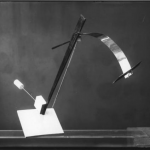
Uses and Abuses of Precedent Manuals
Speaker: Berrin Terim
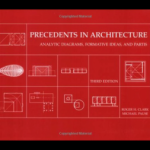
The Necessary Failure of Precedent
Speaker: Donald Kunze
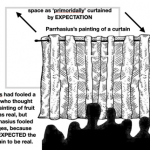
(UN)COMMON INTENTIONS: TWISTING PRECEDENTS
Moderator: Dr. Federica Goffi
The twisting of precedents calls for an examination of referents beyond the architecture discipline and its traditional representational media, looking towards alternative sources ranging from interpretations of poetic language, artistic imagery, symbolism and iconography as underacknowledged or forgotten influences derived from diverse cultural contexts reactivated as (un)common precedents through unconventional readings of the design process.
Dis/continuous Genealogies
Speaker: Marc Neveu
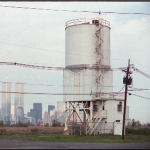
Precedent as Strange Tool
Speaker: Peter Olshavsky IV

A Return to the Primal: Le Corbusier and the Flesh of Matter
Speakers: Maria João Moreira Soares & João Miguel Couto Duarte
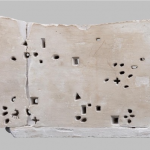
Without Walls: Excavating Site of Inheritance Beyond
Speaker: ‘Parallel of Life and Art’ | Ashley Mason

(UN)COMMON MEDIA: MEMORY AND LANGUAGE
Moderator: Dr. Steve Fai
Memory and language have a primary role in shaping the imagination of architectural precedents. Often unnoticed, precedents transmediate from music, literature, or gastronomy to architecture—from one discipline to another—but also from one material and technique to another (from a musical score to a plan, from a text to a sketch, from a recipe to a building material specification, from a sketch to a drawing, from a drawing to a model, to built works).1 These (un)common transmedia intentions reflect both choice and chance in how precedents and artifacts come to inform the architectural design process. Through memory and language, the “making is [always] re-making.”2
1 See Federica Goffi, “Factum 1:1.” In T-Squared: Theories and Tactics in Architecture and Design, edited by Samantha Kurkowski (London: Intellect Press, 2022). Federica Goffi and Adriana Ross, “Transmedial Time Constructs: Four Causes for Accidents in the Making,” NCBDS, University of Cincinnati, 2018, proceedings. Tracey Eve Winton, “Time and Narrative. Cultivating Public Space, History, Research and Design with Transmedia.” NCBDS, University of Cincinnati, 2018, proceedings.
2 Nelson Goodman, Ways of Worldmaking (Indianapolis: Hacket Publishing Company, 1978), 6.
Precedents as Spoken Constructions: Imagining through Shared Recollections in Architects’ Design Conversations
Speaker: Naomi Gibson
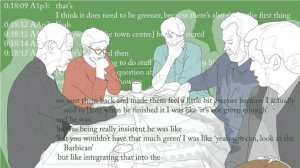
If, I Would (A House in Tulkarem)
Speaker: Rasha Suffarini
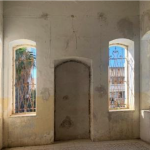
Poetic Language as a Thinking with Things: Storytelling and the Imagination of Matter in Bruno Schulz’s Mythization
Speaker: Anca Matyiku

(Un)COMMON REFERENCES: RE-EXAMINING TYPOLOGIES
Moderator: Dr. Jodi La Coe
(Un)common References calls for the re-examination of building types that constitute common and even dominant precedents. Such case studies are often still limited to well-known projects and architects, seldom venturing into typologies other than the one under design. This session invites to discuss the role of (un)common, undervalued, informal, and vernacular building typologies that are understudied and at risk of being under-documented proposing a radical change in the typological design approach towards a more sustainable development of the built environment at a time of climate crisis.
The Small, Seasonal Cottage: A Formal Study of an Informal Building Type
Speaker: Stephanie Davidson
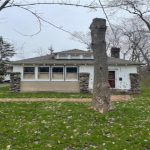
Visualizing the Invisible: Observation, Documentation, and Imagined Situations of Life
Speaker: Yoonchun Jung

Replacement and Re-examination of the Idea of Housing in Crisis
Speaker: Izumi Kuroishi
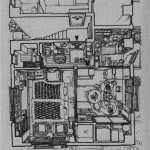
Southern Architecture, Post-Apartheid and Situated Practice
Speaker: Jhono Bennett

The Asklepion and Epicurean Commune as Precedents for Today’s University Campus
Speaker: Phillip Mead

(Un)COMMON MEDIA: THE SENSORIUM
Moderator: Kristin Washco, PhD Candidate
(Un)common media invites an interdisciplinary sensory perspective towards the study of precedents in architecture, inclusive of fields such as gastronomy, aurality, music, visual arts, film making, performance arts, etc. Such fields allow the adbuction of sensorial and embodied explorations that can inform architectural approaches to the study and use of materials, which can be used in a pedagogical setting as well as in design practice, towards the realization of vivid and resonant atmospheres. These (un)common sensorial intentions have the potential to inform the architectural design process well beyond a dominant Western culture of ocularcentrism through the engagement of all the senses- sight (vision), sound (hearing), smell (olfaction), taste (gustation), and touch (tactile) -and their synesthetic interactions.
Gastronomy as Architectural Precedent
Speaker: Jorge Mejia Hernandez

Deafening Architecture – Re-Centering the Work of
Adolf Loos
Speaker: Nina Vollenbroker
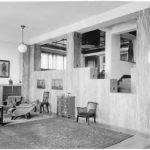
Architecture’s Acoustic Shadow: Infrastructures of
Orientation and Sonic Belonging
Speaker: Jonathan Tyrrell
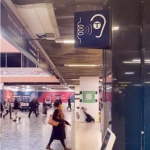
Film Writing Architecture
Speaker: Thi Phuong-Trâm Nguyen

Incisions: The power of Cutting in Gordon Matta-Clark’s
Splitting (1974) as an architectonical reference
Speaker: Camila Mancilla Vera
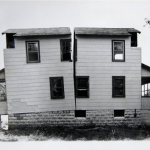
Architectural Rehearsal: Unearthing Embodied Architectural Precedents
Speaker: Aurélie Dupuis

(Un)COMMON TRANSMEDIA: DRAWING AND PEDAGOGY
Moderator: Isabel Potworowski, PhD Candidate
(Un)common Transmedia can be the subject of pedagogical and professional experimentation using different types of analog and digital drawings and models in sequence and out of sequence. From sketches, to conceptual, design or development drawings, architectural representation is a means of interpreting, translating, registering, but also ingenerating precedents through an individual creative process that takes place through the study of nature and the built world. Shared precedents can transmediate through drawn elaborations to different and even (un)common results. (Un)common transmedia intentions take place through the acts of drawing and making, reflecting individual choices about precedents and artifacts informing the architectural design process in unpredictable ways.
(Un)common Ways of Seeing and Making the World: The Sketch as a Dialogue with the World in the Work of Álvaro Siza
Speaker: Bruno Silvestre
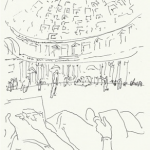
Drawing as a Metaphoric Act
Speaker: Pari Riahi
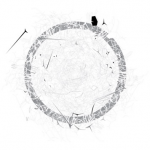
Architects in the Arbor: Tale-Telling Trees
Speaker: Janine Debanne

An Introduction to History as an Object for Early Design
Students
Speaker: Hala Barakat
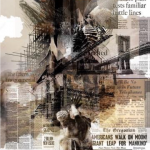
Standard Time and Imperial Precedents Out-of-Context: Constructing Boundaries in Settler-Colonial Canada
Speaker: Émélie Desrochers-Turgeon

Critical Responses to the (Un)common Transmedia Workshops: Keynote Speakers
Moderator: Dr. Suzanne Harris-Brandts
This session invites the keynote speakers Klaske Havik, Ken Albala, Robert Lemon and Jesse Stewart to offer critical reflections and responses to the exhibited works produced in the workshops on music & architecture, literature & architecture and gastronomy & architecture lead and implemented by faculty advisors and co-convenors in various parts of the architecture curriculum at the ASAU, Carleton University in 2022-2023.
Workshop 1: Between Music & Architecture
Federica Goffi, Isabel Potworowski and Jesse Stewart
Workshop II: Between Literature & Architecture
Suzanne Harris-Brandts & Isabel Potworowski
Workshop III: Between Gastronomy & Architecture
Kristin Washco & Sheryl Boyle
(Un)COMMON REFERENCES: THE DIVERGENCE OF PRECEDENTS
Moderator: Dr. Marc Neveu
The divergence of precedents draws attention to inclusive practices of architecture which resist, reject, and replace common precedents with localized and (un)common ones. These practices have a renewed role in shaping the architectural imagination, moving away from the compulsion to repeat, restate, and re-enact. This divergence draws attention to the overlooked, from interior furnishings which can speak to a certain socio-political context, to different notions of time and their impact on the experience of space well beyond its physical appearance, to the experiential knowing and qualities of place that allow to truly be in the precedent, transforming documentation into inhabitation.
The Immanent Collapse as Precedent – Chronopathological Compulsions
Speakers: Claudio Sgarbi & Talia Trainin

Is There a Way to Reconstruct a Building That is No Longer There through the Objects It Housed?
Speaker: Maria Elisa Navarro Morales

Defamiliarization in Architectural Theory and Praxis through Literary Precedents: Joyce’s Epiphanies and Bakhtin’s Chronotopes
Speakers: Talia Trainin & Daniel Mintz
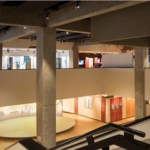
Being in the Precedent
Speaker: Marian Macken
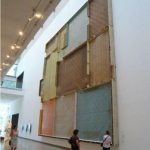
Provocative Proportions
Speaker: Qi Zhu
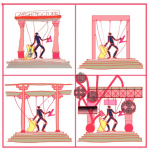
(Un)COMMON BUILDING 22: SOUNDING THE PRECEDENT
This musical performance by architecture and music Carleton students is based on the workshop exploring the relationship between music and architecture.
Created in collaboration with Dr. Jesse Stewart, together with Dr. Federica Goffi and Isabel Potworowski, PhD Candidate.
The visualizations of sound through musical scores and architectural sketches of a performance space in plans and sections can be based on sensory associations of one sense modality with another through the use of colored notations, allowing for chromesthesia—a silent color hearing through sound seeing. The musical score is critical in sensing time, operating a silent listening. However, seeing the music is different from hearing the music. In musical notation, sign and signifier belong to different sense modalities—vision and hearing, respectively. Line weighted orthographic plans and sections offer the opportunity to sense the sequencing of spaces and events synchronically, opening the gaze to the temporal aspect of architecture. Horizontal and vertical sections reveal the thickness of time, defining what I like to call ‘chronosections’—drawings that allow us to be here and there, in the before and after, at the same time. The gap between score and music is a listening space open to performers’ interpretation, not unlike the translational gap between drawing and building. While sketches and drawings release immediate sensory content in drawn music and architecture, they also relay a delayed sensory content: the performance or the executed architecture.1
First year architecture students were invited to create hybrid representations living between a musical graphic score and an architectural drawing. Such drawings lean more towards the abstract nature of a musical graphic score (while maintaining spatial elements), or towards conventional
architectural representation (such as plans or sections). Whether it is musical or architectural, the drawing-scores were designed to be interpreted musically by an ensemble of up to three musicians.
The performance, Sounding the Precedent, is based on a drawing-score by Nikki Sond. The score is composed of overlapping mylar sheets. From the top to the bottom, sheets are played from forte to piano, respectively. Each sheet can be oriented in four different ways. Music is read clockwise beginning at 12 o’clock.
1 Federica Goffi, “Chromesthesia and the Multiverse of Listening in Music and Architecture: Luigi Nono in Collaboration with Renzo Piano,” in The Sound of Architecture, edited by Angeliki Sioli and Elisavet Kiourtsoglou, Cornell University Press, 2022.
